Choosing the Perfect Windows for Your Home
You could say that windows are the eyes of your home to the world. After all, your home is more than just a building; it's a reflection of your style and a place for comfort and security.
That's why at Graber Supply, we're committed to providing homeowners with everything they need to create that perfect living space, including windows.
Windows bathe your interior in natural light, creating a warm and inviting atmosphere. They allow for fresh air circulation, keeping your home healthy and comfortable. They contribute significantly to your home's curb appeal, adding a touch of elegance and character.
But most importantly, well-chosen windows can have a dramatic impact on your energy efficiency..
Whether you're building a brand new home or considering replacing your existing windows, this guide will equip you with the knowledge you need to make informed decisions. We'll explore the benefits of new windows, the signs that it might be time for replacements, and the key factors to consider when choosing the perfect windows for your home.
Ready to get started?
Let's dive in!
Understanding Your Window Needs
Investing in new windows can bring a multitude of benefits to your home. Whether you're replacing existing windows or you’re putting windows in a new build, choosing quality windows is a worthwhile decision. Let's look at some of the key advantages:
- Energy Efficiency Powerhouse: Modern windows are designed with superior insulation properties. These properties help to keep your home comfortable year-round. Ultimately, they lower utility bills as your HVAC system won't have to work as hard to maintain the desired temperature. Furthermore, by reducing your energy consumption, you'll be contributing to a more sustainable environment.
- Lighten Up Your Space: Natural light is not only essential for well-being but also creates a bright and cheerful atmosphere. New windows, especially larger ones or those with strategically placed panels, can significantly enhance the natural light flow within your home. This not only improves the visual appeal but can also have a positive impact on mood and productivity.
- Curb Appeal Boost: If you want to significantly enhance your home's curb appeal, consider upgrading the windows. Updated windows can add a touch of elegance and character to your home's exterior. It's a quick way to boost your home's resale value if you're considering selling your house in the near future. Potential buyers often pay close attention to the overall visual impression of a house.
- Peace and Quiet, Please: Modern windows incorporate advanced features that significantly reduce noise pollution from outside traffic, construction, or noisy neighbors. This creates a more peaceful and tranquil living environment, allowing you to relax and unwind more easily.
Time for an Upgrade: Warning Signs Your Windows Need Replacing
While windows are built to last, they can deteriorate over time from weather exposure and natural wear and tear.
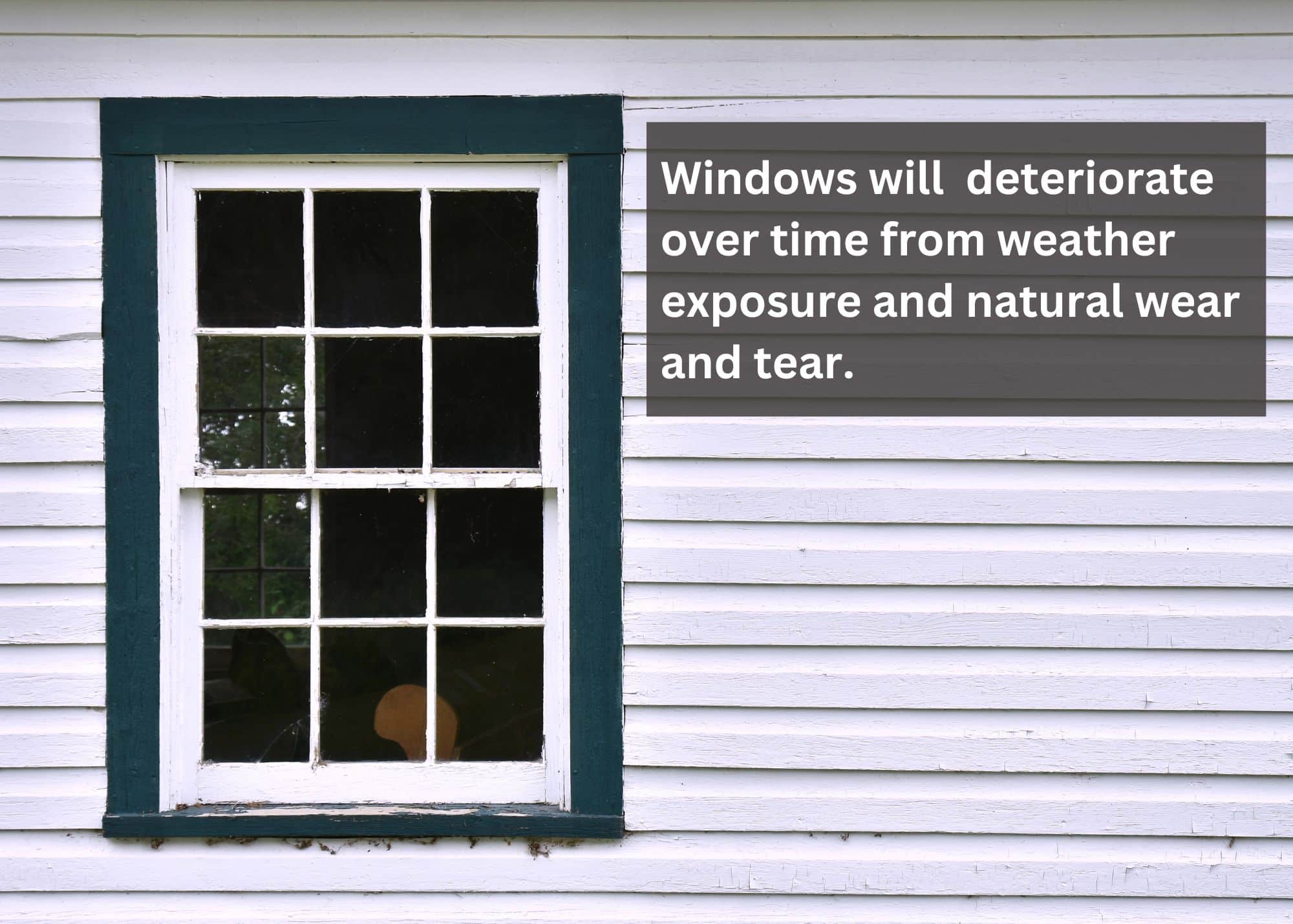
Here are some telltale signs that it might be time to consider replacing your existing windows:
- You feel drafts: Drafty windows are a clear indication that your windows are no longer effectively insulating your home. Nobody likes to feel drafts inside your home, especially during extreme weather conditions. Ultimately, drafty windows will drive up your energy bills.
- You see foggy panes: When condensation forms between the panes of glass it means that the seal between them has broken. This reduces the window's insulating properties and can lead to further problems like mold growth.
- Your windows stick and strain: Windows that become difficult to open or close are not only frustrating but also pose a safety hazard in case of an emergency. It often means your window frames are warping, the hardware is worn-out, or dirt and debris have accumulated in the track.
- You observe visible damage: If you notice rotting, warping, or cracking of window frames, your windows are clearly deteriorating and their structural integrity is compromised. Not only that but chipped or damaged glass poses a safety risk and should be addressed promptly.
- You hear outside noise all the time: If you find yourself constantly battling outside noise, your windows are no longer able to block out sound pollution. Upgrading to windows with improved noise reduction capabilities will significantly enhance your living experience.
New Build vs. Replacement Windows
When choosing windows, the approach differs slightly depending on whether you're building a new home or replacing existing ones.
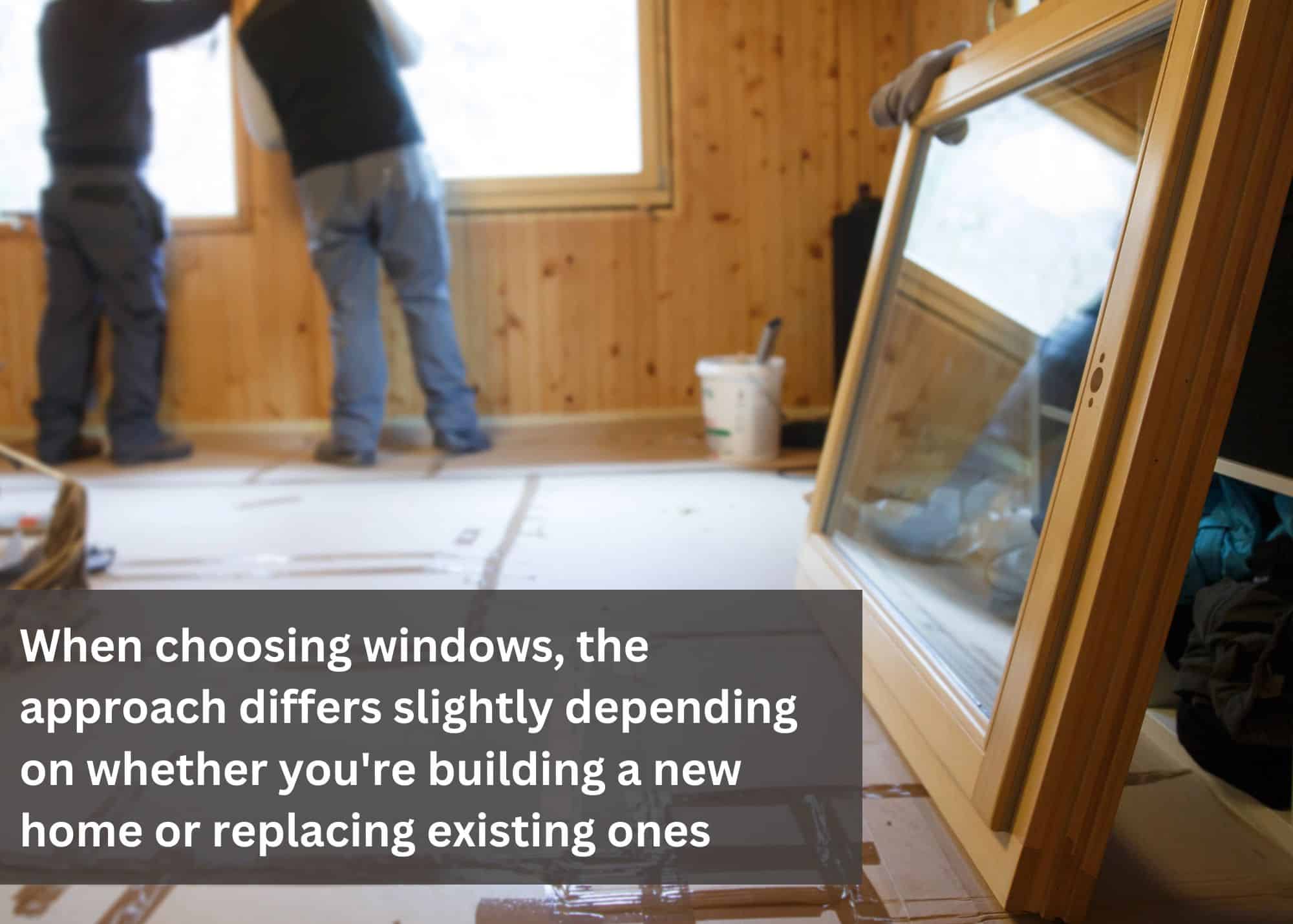
Let us explain:
- New Builds: For new construction, you have the freedom to explore a wider range of window types and sizes to complement your architectural style and desired functionality. How much natural light do you want in each room? What kind of ventilation are you going to need? How much can you afford to spend on windows? These are the things you can keep in mind with new builds.
- Replacement Magic: When replacing windows, it's crucial to ensure a seamless fit. You'll want to make sure that you match the existing style and dimensions of the window so you can maintain the overall aesthetics of your home. However, you can still improve the quality of window frame material, glass, and efficiency as your budget allows.
Now that you have a better handle on what you need in terms of windows, let's explore how to determine which window best fits those needs.
Choosing the Perfect Window
In today's marketplace, you can choose from a variety of window styles. As you look for the one that best fits your needs, take into consideration what you'll need it to do, what you'll want it to look like, and where you'll want it to be in your room. Here's a breakdown of some popular options to help you navigate your choices:
Double-Hung Windows
A timeless classic, double-hung windows feature two vertically sliding sashes. This allows for excellent ventilation control as you can open the top, bottom, or both sashes for fresh air circulation. They're also easy to clean from inside the house.
Casement Windows
Hinged on the side and cranked open outward, casement windows offer unobstructed views and maximum ventilation. They're a great choice for rooms where you want to capture the panorama or enjoy a refreshing breeze.
Awning Windows
Ideal for basements, bathrooms, or areas prone to rain, awning windows hinge at the top and open outward. This angled design allows for ventilation even during downpours without letting rain enter the house.
Sliding Windows
Perfect for space-saving and wide openings, sliding windows feature sashes that glide horizontally on a track. They're easy to operate and offer a clean, modern look.
Picture Windows
These large, fixed windows provide stunning, expansive views and maximize natural light intake.
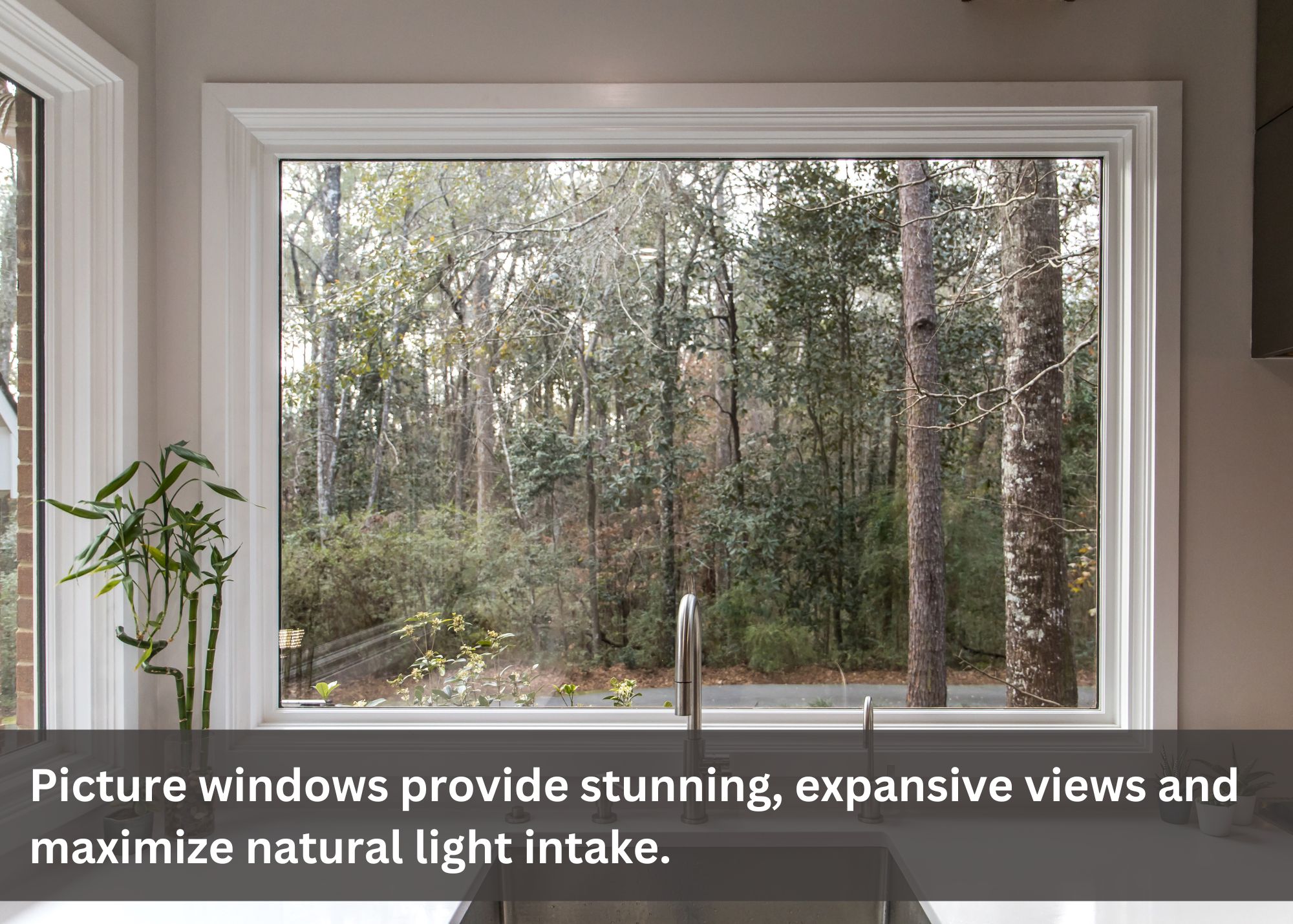
While they don't offer ventilation, they can be a beautiful focal point in your living room, dining area, or any space where you want to create a feeling of openness.
Bay and Bow Windows
Bay and bow windows are multi-pane configurations that project outward from the wall adding architectural interest and a spacious feel. Bay windows typically have three angled sections, while bow windows have a curved shape with four or more panes. They create a cozy nook or seating area and allow for ample natural light.
Framing Your Views: Selecting the Right Window Material
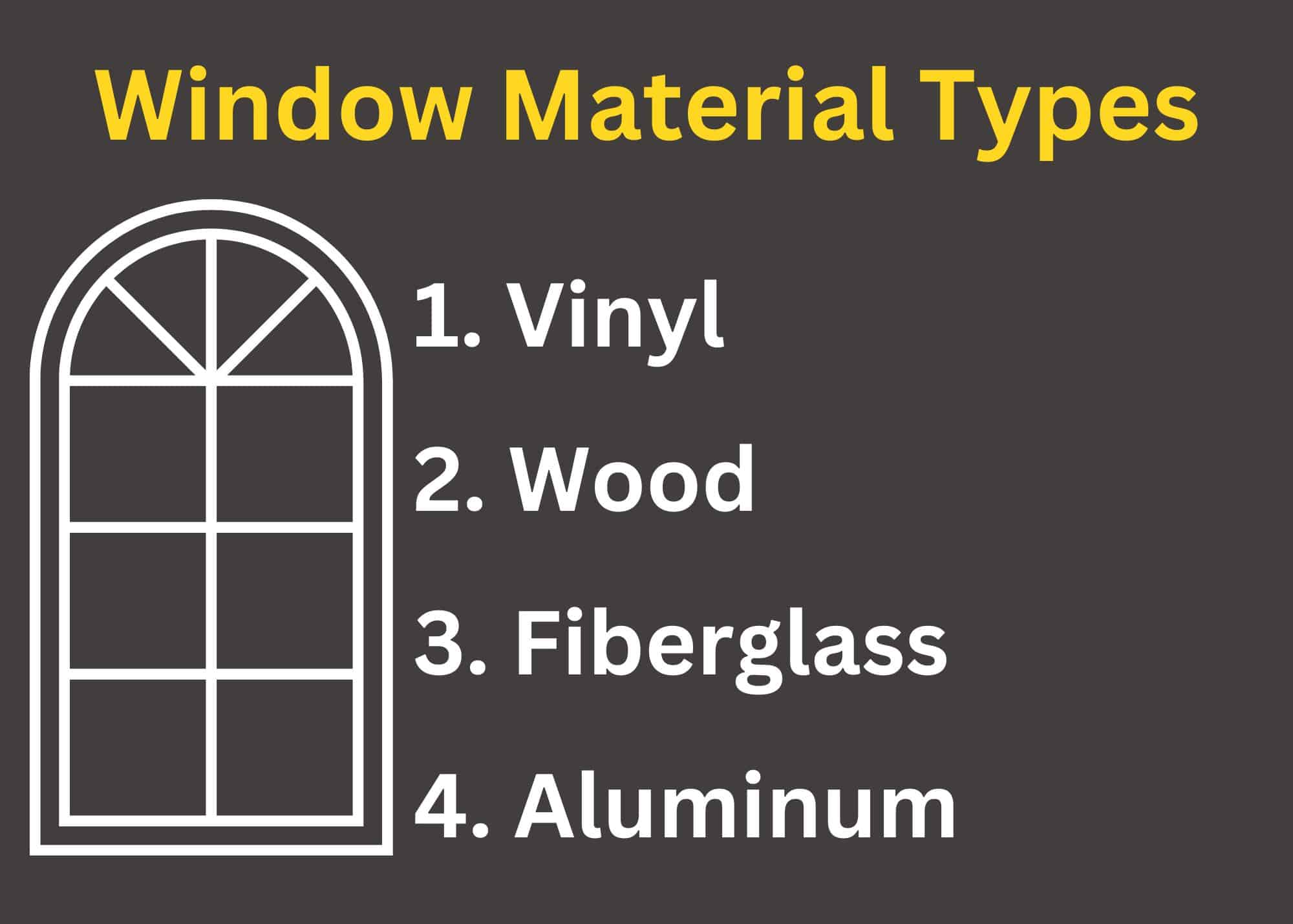
The material of your window frames shapes the overall look and durability of your windows. Furthermore, some materials are easier to maintain than others. Let's take a closer look at the common options:
Vinyl
An affordable and low-maintenance choice, vinyl windows are energy-efficient and come in a variety of colors to suit your style. However, they may not be as strong or aesthetically pleasing as other materials.
Wood
Offering timeless beauty and excellent insulating properties, wood windows are a classic choice. At the same time, they require regular maintenance, such as painting or staining, to maintain their appearance and performance.
Fiberglass
A strong and durable option, fiberglass windows resist warping and require minimal maintenance. They offer good insulation properties and come in various styles and colors. While more expensive than vinyl, they provide a longer lifespan and better performance.
Aluminum
Offering slim profiles ideal for large windows, aluminum frames are low-maintenance and durable. Be aware, however, that they may not be the best choice for colder climates as they conduct heat and cold more readily.
Seeing Clearly: Exploring Glass Options
Nothing impacts energy efficiency, privacy, and UV protection as much as the type of glass you choose for your windows. Here are the five most common glass options to consider:
Double-Pane Glass
Double-pane glass is the standard for most windows. It creates an insulating air pocket between two panes, improving energy efficiency.
Triple-Pane Glass
For colder climates, triple-pane glass offers the ultimate energy savings by adding an extra layer of insulation.
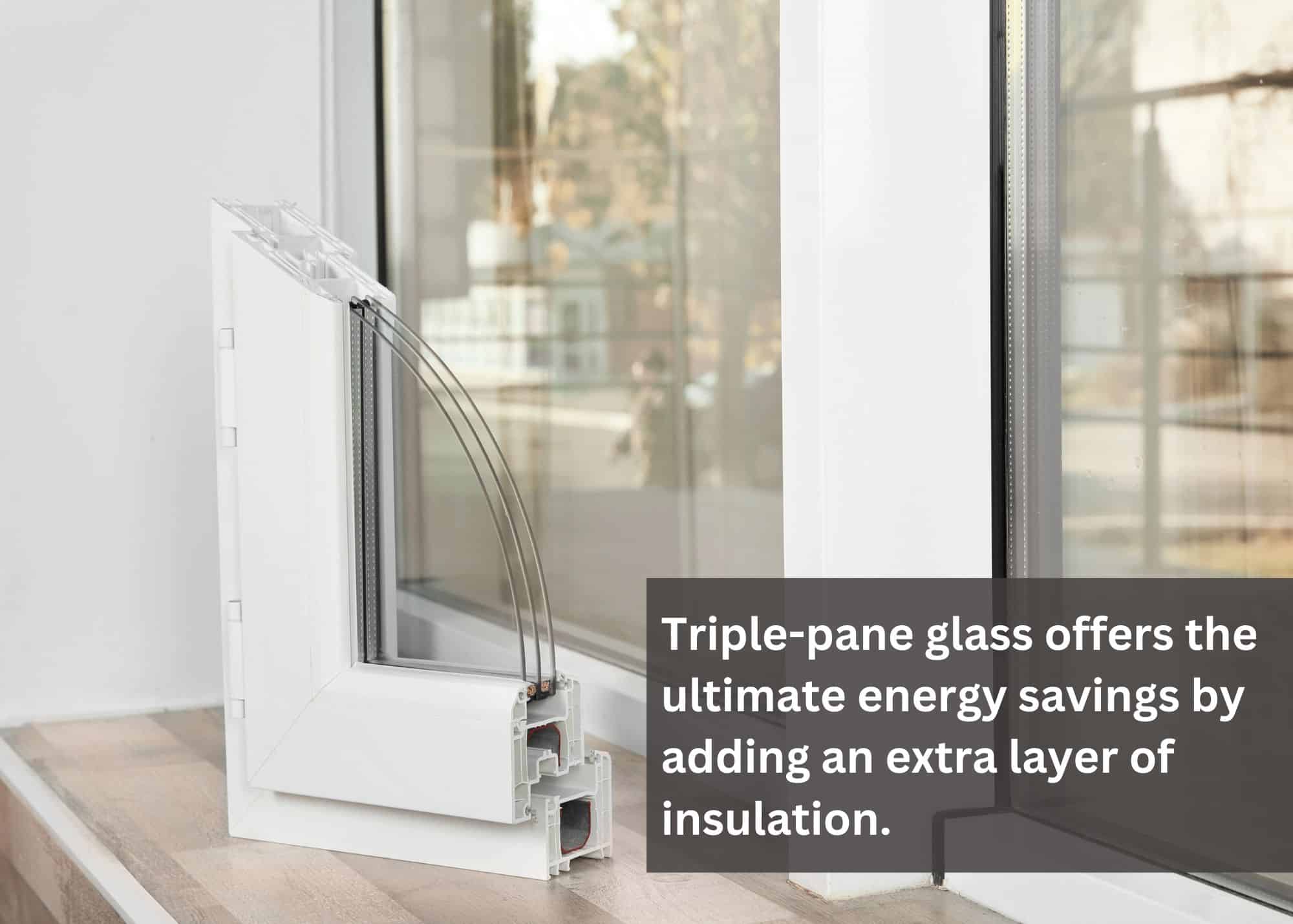
However, it comes at a higher cost.
Low-Emissivity (Low-E) Glass
This type of glass features a special coating that reduces heat gain in summer and heat loss in winter. As you would expect, this improves the overall energy efficiency of the window. It also offers protection from harmful UV rays.
Tinted Glass
Tinted glass reduces solar heat gain, helping to keep your home cooler during hot weather. It also provides additional privacy by obscuring the view from outside.
Tempered Glass
Tempered glass undergoes a heat treatment process that makes it shatter into small, blunt pieces upon impact. This reduces the risk of injury and thereby makes it a good safety option. People commonly use tempered glass for windows near doors, walkways, or in areas with high activity.
Are you starting to get a clear picture of the windows you need for your home? You might be wondering now about maintaining and caring for your windows. Let's look at that next.
Maintaining and Caring for Your Windows

Just like any other part of your home, windows require proper care if they're going to work well for you long-term. Here's a simple routine we recommend you keep if you want your windows to look their best and function smoothly:
- Clean your windows: Use a mild cleaning solution and a soft microfiber cloth to clean your windows regularly. This removes dirt, dust, and debris that can accumulate over time. Such dirt and debris reduce your window's clarity and curb appeal. Be sure to avoid using abrasive cleaners or harsh chemicals that can damage the glass or frame material.
- Lubricate mechanisms: To ensure smooth operation, lubricate moving parts like hinges and tracks periodically with a silicone-based lubricant recommended for windows. This will prevent sticking and make opening and closing your windows effortless.
- Apply weatherproofing: The weatherstripping around your windows plays a crucial role in maintaining energy efficiency by creating a tight seal. Inspect the weatherstripping regularly for signs of wear and tear, such as cracking or brittleness. If you notice any damage, replace the weatherstripping promptly to prevent drafts and leaks.
- Add a professional touch: Consider scheduling professional window inspections every few years. A qualified technician can assess the overall condition of your windows, identify any potential problems, and perform necessary maintenance to make sure they continue to function at their peak for years to come.
Now that've you figured out what type of window you need and have a maintenance routine to ensure longevity, you're ready to buy your windows. But wait! We've got some bonus tips on adding the finishing touch.
Bonus Section: The Finishing Touch - Window Treatments
Consider adding window treatments to enhance their functionality and create a complete look for your space. Window treatments come in a wide variety of styles, materials, and opacities, offering you the ability to control privacy, light filtration, and even insulation. Here's what we're talking about:
- Blinds: Horizontal or vertical slats that can be tilted to adjust light levels. They offer a clean, modern look and come in various materials like wood, faux wood, and aluminum.
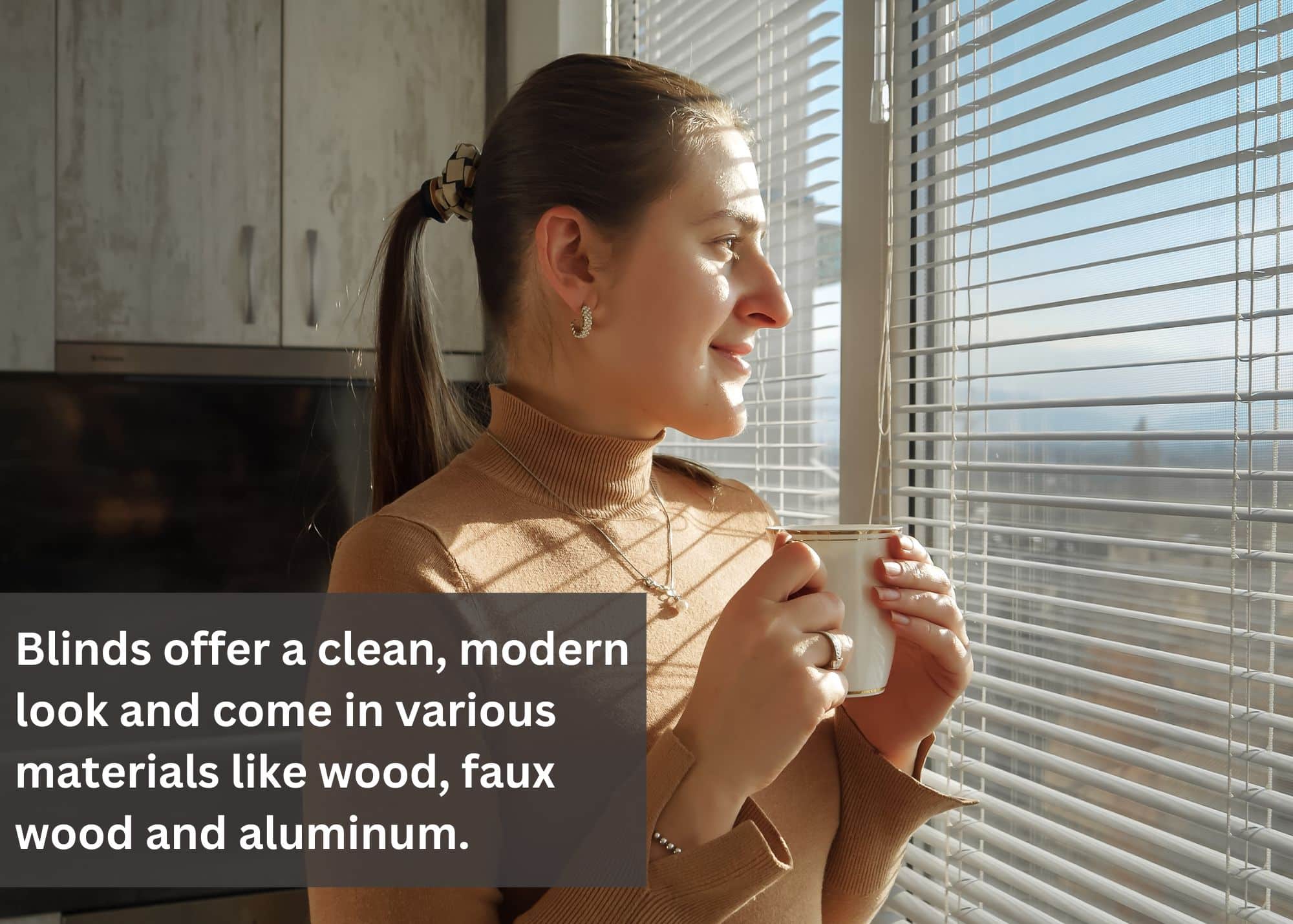
- Curtains and Drapes: Fabric panels that add softness and elegance to a room. They offer excellent light control and insulation, making them a good choice for bedrooms or living areas.
- Shades: Made from fabric or other materials, shades offer a variety of light control options, including blackout shades for complete darkness. They come in roller, Roman, and cellular styles, providing a range of aesthetics to suit your taste.
By combining the beauty of new windows with the functionality of window treatments, you can create a comfortable, stylish, and energy-efficient haven in your home.
Conclusion
Choosing the perfect windows for your home is an investment that will yield significant rewards. The specific look you're going for, the frame material, and the glass options each shape what window you choose. Good windows provide plenty of natural light and ventilation while increasing energy efficiency and curb appeal. They not only enhance your comfort and enjoyment of your home but also contribute to a greener environment and lower your utility bills.
Sound like what you need?
Then contact Graber Supply today to speak with our window experts. We'll guide you through the selection process and help you find the perfect windows to fit your needs and budget.
And if you enjoyed this post, you may be interested in checking out other posts on our blog:
- Considering New Replacement Windows? Read Our Ultimate Guide To Windows First
- 9 Reasons A New Home Entry Door Is The Right Choice (and how to choose the right one)!
- 9 Things You Must Do Before Remodeling Your Home




